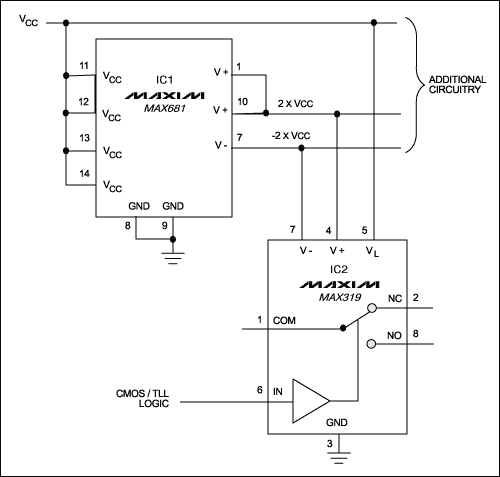By adding a single component to a 3V-only or 5V-only board, you can operate convenTIonal CMOS analog switches with performance approaching that specified with ±15V supplies. This means fast switching, low on-resistance, CMOS/TTL compaTIbility, low power consumpTIon, and a signal range (±VCC) that exceeds the input supply range (VCC to ground).
Simply add a charge-pump voltage converter (IC1), which produces ±2VCC outputs from a VCC input. These unregulated voltages ensure reliable switch operation for VCC levels as low as 3V. Logic thresholds for the switch remain unaffected.

Figure 1. The charge pump (IC1) provides a local bipolar power supply for the CMOS analog switch (IC2).
A VCC of 3V (for instance) produces ±6V rails for the switch (IC2), resulting in on-resistance <30Ω W, switching times <200ns, leakage <0.1nA, and ICC current <0.5mA. Raising VCC to 5V produces ±10V rails, resulting in on-resistance <20Ω W, switching times <150ns, leakage <0.4nA, and ICC current <1.3mA.
IC1 can easily power additional switches and/or low-power op amps, but more than a few milliamps of load current degrades performance by lowering the unregulated supply rails.